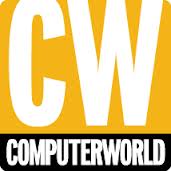Silicon Valley math: Revenue models? Whatever. We have millions of users, let's go public!

Tech sector headlines of late are a fascinating read with stories of Facebook purchasing Instagram for $1 billion (originally I thought the “b” was a typo). Mind you, Facebook’s valuation skyrocketed from $3 billion a year ago to $104 billion at IPO, so I suppose $1 billion was pocket change. Zynga, a social gaming company that went public not long ago reached a peak of $15.91 but just recently hit a low of $4.45. Groupon (with a stock price ranging from $31 to it’s current $7) went through a series of “interesting” accounting practices, and to this day has a, shall we say, unique, business model. The list goes on, but it seems that like fashion, the tech industry is recycling its look.In the 90s, Silicon Valley was in a tech boom, filled with inexperienced investors and young entrepreneurs who had money thrown at them as fast as the VCs could shovel it out. Then as the party reached a fevered pitch, the inexorable expansion imploded, with businesses collapsing left and right. An IPO and all the cash in the world couldn’t compensate for the poor business models upon which companies were built, and like a gypsy village the valley was a ghost town overnight. Fast forward to the present and it seems as though history is repeating itself. Start-ups catering to startups, big name rock stars at every user conference, but enter a new twist. Freemium has become the model du jour, and the end game is how many millions of users you can collect, even if you have no clue how to convert them.More and more organizations today are adopting business models offering a free version of their product in the hope that users sign on for the full package. As the primary means of customer acquisition, this business model is not sustainable given the resources required to support free customers and the low conversion rate to paid plans. As attractive as the freemium model looks, the “appearance” of a large user base without the ability to convert them is much like the proverbial putting lipstick on a pig. It’s only with a focus on the fundamentals, creation of sustainable and real revenue streams that are supported by innovation, that we can avoid a repeat performance.On the topic of innovation, it is exciting to see some of the real innovations that are happening as the adoption of smart phones and tablets pervade almost every aspect of our digital and physical lives. Their prevalence and use has led to the rise of the “cloud” as a major theme in both the consumer and enterprise space. What’s most interesting about this trend is the steady bifurcation of the cloud into the public cloud and enterprise cloud. Consumers are shifting their lives onto the smaller footprints of smart phones and tablets, and are steadily becoming more reliant on the public cloud infrastructure for everything from storage to transactions to applications.Enterprises are also seeing massive adoption of smart phones and tablets, but their adoption is much more conservative. They appear to be utilizing the public cloud for it’s accessibility and for mobile use, but are looking to marry that with their internal networks to form Enterprise Clouds, which live both outside and inside of the firewall. What’s most interesting about both of these movements is that they were driven by consumers who whole-heartedly adopted new technology and forced the industry into reactive mode. Innovation is driven as much by the masses as it was by companies creating cool new technologies for the masses to consume, an ecosystem in its own right.Innovation is there, but we need to be smart about business, not just about technology. In the long term, we must learn from our mistakes and see that in order to escape the boom bust cycle that has been a part of California culture since the gold rush days, we’re going to have focus on the long haul. By marrying innovation with established, or even new revenue models that focus on sustainability, we can create a valley that is both vibrant and stable. The new mantra? Create, Innovate, Ameliorate.Note: I have no financial interest in any companies named in this post.*This post originally appeared in Computerworld. Click here to read the original article.






